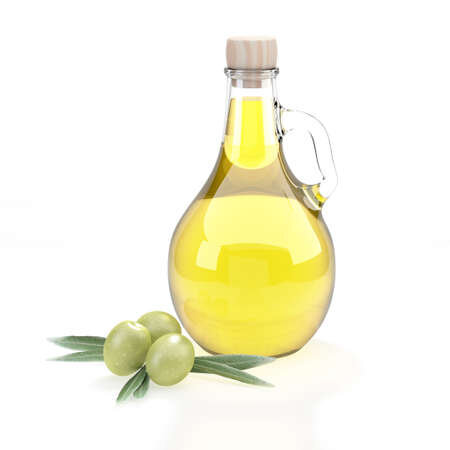Hair Health 101: Dryness, Breakage & Hair Products
A beginner’s glance into learning about dryness, breakage, and how to select healthy hair products.
Hair talks without words. When your hair is dry, it speaks. When your hair is breaking, it speaks. When your hair fails to retain length, it speaks. Really listening to your hair allows you to understand what it's saying so you can correct it. Dryness, breakage, and disliking a product are three hair issues that require you to listen to your hair so you can fix them.
Dryness
The most common hair issue is dryness. I don't know why my hair is dry, I've tried so many hair products, and I just have dry hair are usual statements from dry-hair sufferers. Many people realize their hair is dry by touching it. The extreme roughness typically indicates dryness. Some points to consider regarding dryness are your diet, your health, your products, and your regular hair maintenance. How does your hair react when you use some products versus others? How does your hair sound when you comb or brush it? Does it sound like you're trying to comb hay or twine? How does your hair react when you eat some foods versus others? Is your diet rich in fruits and vegetables or full of fast foods? Do you drink a lot of water, or just a little? Is your hair drier in some seasons than others?
Consider these questions while you observe your hair's behavior. If you have a health condition or are on prescribed medication, that may cause dryness as well. Keep a hair journal to record your observations. Make a note of everything, even those factors that seem insignificant. If you listen, you will find the answer--no matter how long it takes.
Breakage
Breakage is the enemy of retention. You will not see your growth if your hair breaks as fast as it grows. On the surface, it's easy enough to know if your hair is breaking. If you see excess amounts of hair on the floor or in the sink after combing or styling, then your hair is breaking. The listening challenge for breaking hair involves discovering why your hair is breaking. How do you handle your hair--roughly or gently? How do you maintain your hair (lots of heat, scarf or no scarf before bed, moisturizing products, healthy or non-healthy diet, etc.)?
Note whether the breakage increases or decreases when you use certain products, eat certain foods, and/or treat your hair in a certain manner. Some illnesses (thyroid disorders, anemia, and polycystic ovarian syndrome, or PCOS) may also contribute to breakage. Hair tends to follow a pattern. Learning your hair's pattern is a firm step toward halting breakage.
Disliking a Hair Product or Technique
Your hair may not always like the products you put on it. There can be several reasons for your hair's unfavorable response. It could be the consistency of the product. It could be the ingredients in the product. It could be the way one ingredient reacts with another ingredient in the product. It could be that the product does not mesh well with another product in your hair regimen. Finding out what's wrong involves a lot of trial and error, so you'll have to be patient and persistent. You can listen to your hair by observing how your hair reacts when you use certain products. If you notice that your hair is dry or continually breaking after you apply a particular product, stop using it.
Dryness and breakage is your hair's way of crying. Wipe away your hair's tears by soothing it with products that make your hair smile.
How To Use Oils In Your Hair and Beauty Regimen
Oils are staples in many beauty regimens because of their versatility. Hair-growth aids, scalp-pleasers, skin-nourishers, shine-enhancers…there seems to be no end to the wonders of oil, and the number of oils appears to be just as extensive.
Oils for hair growth
There are several types of hair-growth aids, but oils are among the most popular. Many oils help with hair growth, so it’s all about what you prefer. Some of the many oils that help with hair growth are peppermint, rosemary, and castor.
Peppermint oil contains nutrient-rich ingredients like folate and manganese to stimulate the follicles.
Rosemary oil has a herbal scent and helps to relieve dry scalp while filling in thinning edges.
Castor oil is especially helpful at restoring bald edges. Its anti-fungal and anti-bacterial properties provide an ideal environment for hair growth. It’s also a great carrier oil to use with essential oils like peppermint and rosemary.
Oils for soft skin
As the cooler weather draws near, oils are finding their way back into the skin-friend rotation. Some excellent picks are Vitamin E oil, grapeseed oil, and sunflower oil.
Vitamin E oil helps to prevent or treat dry, flaky skin.
Grapeseed oil helps to improve skin’s softness and texture while helping to promote even skin tone.
Sunflower oil helps the skin to retain moisture.
Fall and winter are the perfect seasons to add more oil to your beauty regimen, so go explore and have some oil fun.
How To Make Hair Time Fun For Kids
For many of us, hair-styling sessions are our time to unwind and squash the week’s pressures and annoyances. Children tend to have a different outlook. They often view hair grooming as a never-ending torture session (having to comb and brush their hair, water getting in their eyes, etc.). In apprehension of the “impending doom,” they may cry, scream, or hide in closets and under beds, and do whatever else to avoid getting their hair done. If this description even remotely describes hair day with your little one, read on for tips to keep the smiles all abound.
Keep your children occupied and entertained throughout the process. Let them watch their favorite show or movie while you are styling or detangling their hair. Put on their favorite songs while you wash and condition their hair to keep them happy.
Make the grooming session as pain-free as possible. Use seamless combs, quality detangling brushes, and heavy-duty detanglers to eliminate detangling aches. If time allows, try finger detangling.
Don’t begin to groom your child’s hair just before nap or feeding times. Children are very routine-oriented. Later sleep and meal times may induce crankiness, which will result in longer styling sessions.
Take breaks. Small children get restless when they have to sit in one spot for a long time. Periodic breaks will help to reduce crankiness.
Get your children involved. Let your children help to select their grooming products. Allowing children to help pick their hair products may help them to view wash day with less angst and more favor.
Here’s hoping your baby’s upcoming wash day is filled with sunshine and smiles!







